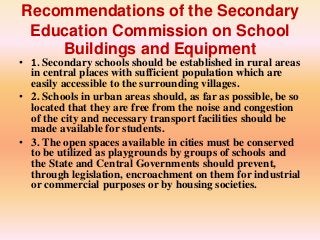
Known as the Wisconsin Higher Education Grant, this state grant is designed to provide assistance to undergraduate Wisconsin residents. The Wisconsin Higher Education Aids Board offers it. The Wisconsin Grant offers undergraduates with financial need the opportunity to complete their college education. Those eligible for this state grant are typically high school seniors, first-time college students, and college juniors and seniors. The grants range in amount from $250 to $3500 each academic year.
Students may receive this grant if they are enrolled at least half-time at a Wisconsin technical college, a Tribal institution, or a Wisconsin college. Wisconsin private colleges students can also receive the Wisconsin Grant. This grant is available to students who demonstrate financial need. The Wisconsin Grant was created to support the state’s workforce, economic development, civic and cultural life, as well as its workforce.

In addition to the Wisconsin Grant, there are also other state funding options available to Wisconsin residents. These programs are available to Native Americans, African Americans, Hispanic, and Latino students. Grants for up 10 semesters are available to students who meet the requirements. Wisconsin Study Abroad Grant may also apply. This grant grants funding for Wisconsin residents to study abroad during either the fall semester or spring semester. However, there is a limit to the amount of funds that can be awarded.
The Wisconsin Grant also offers assistance to deaf and hard of hearing students. This program is funded and grants funding to undergraduates suffering from severe or profound hearing loss. Wisconsin residents may qualify for grants of up 1100 dollars per year. To qualify for this program, applicants will need to complete the FAFSA.
The Wisconsin Study Abroad Grant is available to high-need students. Students who are Wisconsin residents and plan to study abroad at a UW System or other approved UW System institution can apply for this grant. It can also be used to help pay for summer studies abroad. A maximum of $2000 per year is allowed for study abroad scholarships. The applicant must be enrolled full time in the semester before they want to study abroad.
The Wisconsin Minority Retention Program offers scholarships to undergraduate Wisconsin residents who have a minority status according to the state's definition. Minority students are defined as African American, Hispanic, or Southeast Asian. Students must have completed four semesters at a Wisconsin public school before they can be considered for eligibility. In addition, they must be enrolled at least half-time in an independent institution. For first-year students, the Wisconsin Study Abroad Grant cannot be used.

The Lawton Grant is a need-based grant for undergraduate Wisconsin residents of African American, Hispanic, and Native American heritage. Applicants must be enrolled at least half-time and have a grade point average of at least 2.00. Students may also be eligible to the Wisconsin Scholarship, which is a need-based grant. This grant is available to Wisconsin residents who are pursuing their first undergraduate degree.
FAQ
How long does it usually take to become a early childhood teacher?
A bachelor's degree is required in early childhood education. It takes approximately four years. Two years will be spent taking the general education courses required of most universities.
After your undergraduate studies are completed, you will typically enroll in graduate school. This allows you to become a specialist in a specific area of study.
For example you could focus on child psychology, or learning disabilities. After you complete your master's, it is time to apply to a teacher-preparation program.
This process can take many years. During this period, you will work with experienced educators to gain real-world knowledge.
Finally, before you can begin teaching, you need to pass the state exams.
This process takes several years, which means you won't be able to immediately jump right into the workforce.
What is homeschooling?
Homeschooling is an educational method where children are educated at home by their parents. It is also known by the names private education or self-education.
Families who wish to homeschool their children are well served by this option. This allows them access to a quality education while staying at home.
The parents educate their children from birth to high school. They decide on the subjects they want to study and how much time each subject should take. Each student learns all on their own.
When to start teaching children is up to the parents. Most schools recommend that children start classes at age four to twelve years. Some families decide to wait until kindergarten to start teaching their children.
You can use any number resources to help your children through the curriculum. There are many resources that can help you learn. These include videos, books, websites, magazines and even magazines.
Many families find homeschooling a great fit for their busy schedules. Homeschooling allows parents to spend more time with their children, than traditional public schools.
What is the best time to spend on each semester studying?
The time you spend studying will depend on several factors.
These factors are not the only ones. Some schools may also require you to take certain classes each year. This means that you may not be able to take as many courses each semester. Your advisor will tell you which courses are required for each semester.
Statistics
- And, within ten years of graduation, 44.1 percent of 1993 humanities graduates had written to public officials, compared to 30.1 percent of STEM majors. (bostonreview.net)
- Globally, in 2008, around 89% of children aged six to twelve were enrolled in primary education, and this proportion was rising. (en.wikipedia.org)
- Data from the Department of Education reveal that, among 2008 college graduates, 92.8 percent of humanities majors have voted at least once since finishing school. (bostonreview.net)
- These institutions can vary according to different contexts.[83] (en.wikipedia.org)
- “Children of homeowners are 116% more likely to graduate from college than children of renters of the same age, race, and income. (habitatbroward.org)
External Links
How To
What is vocational education?
Vocational Education is an educational system that prepares students for employment after high school or college by providing them training in specific skills needed for a particular job (such as welding). It includes training on the job in apprenticeship programs. Vocational education differs from general education because it focuses on preparing individuals for specific careers rather than learning broad knowledge for future use. Vocational education's goal is to help students find employment after they graduate.
Vocational education can be offered at any level of schooling: primary, secondary, college, university, technical institutes and trade schools. There are also many specialty schools like nursing schools and law schools, legal schools, medical schools and dental schools as well as veterinary medicine, veterinary medicine, firefighting, police academies and military academies. These schools offer both practical and academic training.
Over recent decades, there have been significant investments made in vocational education by many countries, including Australia, Denmark (Finland), Germany, Ireland and Japan. However, the effectiveness of vocational education remains controversial. Some critics believe it doesn't help students get hired, while others claim that it helps prepare them for life after high school.
According to the U.S. Bureau of Labor Statistics 47% of American adults have a postsecondary certificate. This percentage is higher among those with higher education. 71% percent of the 25-29 year olds with a bachelor's degree are currently working in fields that require postsecondary credentials.
The BLS reported in 2012 that almost half of all adults had some type of postsecondary credential. About a third of Americans were able to obtain a twoyear associate degree. Another 10% had a fouryear bachelor's. One fifth of Americans have a master's, or doctorate.
The median annual wage for individuals with a bachelor's in 2013 was $50,000. This was compared to $23,800 when they had no degree. The median income for those with advanced degrees was $81,300.
The median wage for those who didn't complete high school was $15,200. For those who did not complete high school, the median annual salary was only $15,200.